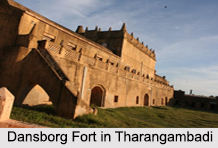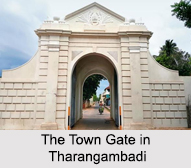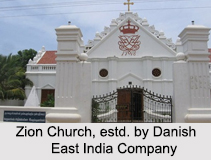 During medieval period India was a powerful post for trading. Including British, Portuguese, French and Dutch, who successfully established trading ports and colonies in India, most of the European power wanted to be on the throne. Among these invaders Denmark was one of them who made settlements in India, mainly south India, but ended up with financial crisis.
During medieval period India was a powerful post for trading. Including British, Portuguese, French and Dutch, who successfully established trading ports and colonies in India, most of the European power wanted to be on the throne. Among these invaders Denmark was one of them who made settlements in India, mainly south India, but ended up with financial crisis.
Among all the Danish settlements, Tharangambadi in Tamil Nadu, Serampore in West Bengal and Nicobar Islands were the most powerful posts. Tharangambadi, formerly known as Tranquebar, was the first Danish trading post established in 1620. The town currently comes in Nagapattinam District of Tamil Nadu on the Coromandel Coast. The word Tharangambadi means the "the land of singing waves".
History of Danish Settlements in South India
On March 17, 1616, the Danish King Christian IV signed on legal papers to establish Danish East India Company, which would have the patent for the spice trade between Denmark and Asia. Unfortunately, the venture was not successful from the very beginning of it.
 In 1620, Danish admiral Ove Gjedde and trade director Robert Crappe, who were planning to escape from Tharangambadi got captured by the Nayak family of Thanjavur. They were the rulers of Tharangambadi at that time. On being presented to the king, Ove and his companions expressed their interest of trading by exporting spices from the land. The deal seemed to be a profitable venture to the king and so he agreed to give them the Tharangambadi village to do the business. The deal also included the building of a stone house which would work as a trading center of the Danes. A town gate was also constructed to mark the beginning of the Danish village. Currently, the gate stands still as a nondescript structure with the Danish royal seal.
In 1620, Danish admiral Ove Gjedde and trade director Robert Crappe, who were planning to escape from Tharangambadi got captured by the Nayak family of Thanjavur. They were the rulers of Tharangambadi at that time. On being presented to the king, Ove and his companions expressed their interest of trading by exporting spices from the land. The deal seemed to be a profitable venture to the king and so he agreed to give them the Tharangambadi village to do the business. The deal also included the building of a stone house which would work as a trading center of the Danes. A town gate was also constructed to mark the beginning of the Danish village. Currently, the gate stands still as a nondescript structure with the Danish royal seal.
Later, Ove built the Fort Dansborg, which is the central highlight of Tharangambadi overlooking the Bay of Bengal. The fort, a purely Scandinavian structure, earlier was the house of governor and now it serves as a museum to exhibit the Danish culture. The fort ranks second to the largest Danish fort Kronborg in Denmark. As time goes on, Denmark"s King Frederik IV also sent missionaries to the Coramandel coast and the population of Danes in Traquebar began to increase.
 Demolition of Danish Settlements
Demolition of Danish Settlements
Danish East India Company was not successful in doing the trade as they hoped it would be. Between 1622 and 1637, only 7 out of 18 ships returned successfully, which departed from Denmark. Also the high tidal waves kept destroying the buildings in the colony. Constant weakening financial condition made the Danes desperate to sell all their possessions to the Dutch. In 1650, Danish East India Company got bankrupt and so was abolished by the Danish King Frederick II.
The secluded Danish colony of Tranquebar kept the Danish flag flying for almost 29 years and sending reports back to Denmark without any support or reply. Then finally in 1669, a ship from Denmark arrived to help the Danish colonial people; a new Danish East India Company was formed and the Danes made their settlements at new places in India. In 1755, Frederiknagore was established in Serampore and Dannemarknagore was established in Chandernagore, which was abandoned in 1714. Overall, the Danish was not able to yield much profit in their business in India. Later, the British devastated Danish East India Company and conquered Tharangambadi and Serampore as well. In 1845, the Danes had to sell all their possessions to the British and got ceased to be a colonial power forever.
The Dansborg Fort, few houses and the churches anticipate the Danish history. The Fort especially showcases the insignia of the Danes in south India. The Danish Tranquebar Association has managed to restore a part of the Dansborg fort with the help of Tamil Nadu State Archeological Department and the Danish Royal family. Currently, Danes are helping to restore and revive these old structures of Danish colonial society in India.



















